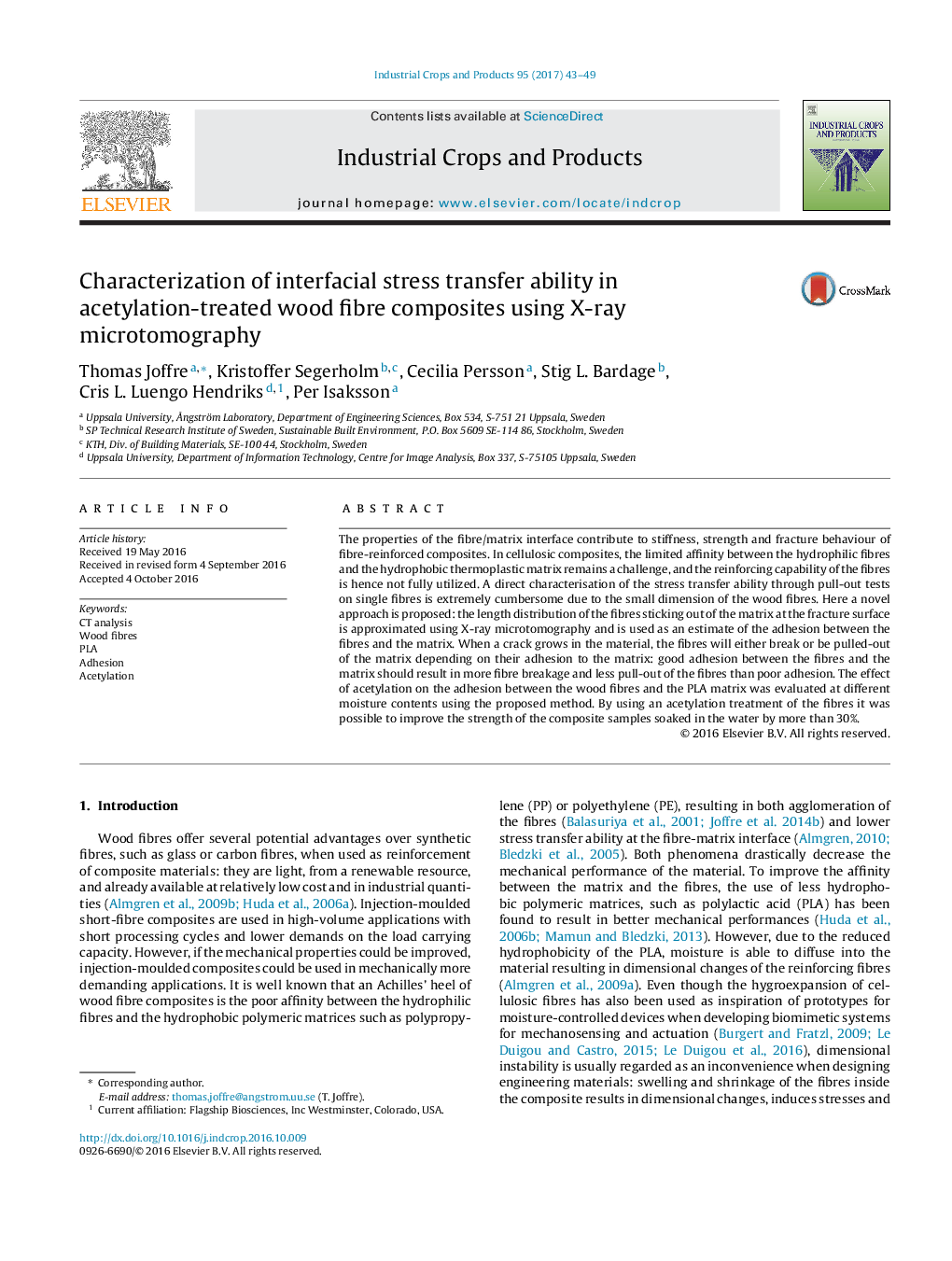| Article ID | Journal | Published Year | Pages | File Type |
|---|---|---|---|---|
| 4511951 | Industrial Crops and Products | 2017 | 7 Pages |
•Acetylated wood fibres improved the strength of wood-PLA composite soaked in water.•The failure mechanisms depend on the fibre-matrix stress-transfer ability.•The dimensional stability of the fibres improves the wet state mechanical properties.
The properties of the fibre/matrix interface contribute to stiffness, strength and fracture behaviour of fibre-reinforced composites. In cellulosic composites, the limited affinity between the hydrophilic fibres and the hydrophobic thermoplastic matrix remains a challenge, and the reinforcing capability of the fibres is hence not fully utilized. A direct characterisation of the stress transfer ability through pull-out tests on single fibres is extremely cumbersome due to the small dimension of the wood fibres. Here a novel approach is proposed: the length distribution of the fibres sticking out of the matrix at the fracture surface is approximated using X-ray microtomography and is used as an estimate of the adhesion between the fibres and the matrix. When a crack grows in the material, the fibres will either break or be pulled-out of the matrix depending on their adhesion to the matrix: good adhesion between the fibres and the matrix should result in more fibre breakage and less pull-out of the fibres than poor adhesion. The effect of acetylation on the adhesion between the wood fibres and the PLA matrix was evaluated at different moisture contents using the proposed method. By using an acetylation treatment of the fibres it was possible to improve the strength of the composite samples soaked in the water by more than 30%.
